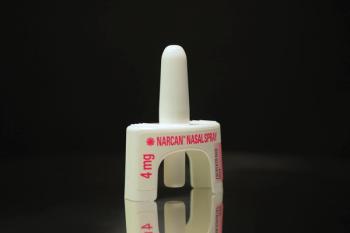
Buprenorphine Option Did Not Improve Pain, Reduce Opioid Dosage
Patients prescribed high-dose opioids were given the option to switch to buprenorphine in hopes of improving pain and reducing opioid dosage.
When patients were given the option of switching from high-dose opioids to buprenorphine, researchers observed minimal improvements in pain and reductions in opioid use. The data, published in JAMA Internal Medicine, also showed outcomes were similar whether patients switched medications or not.1
“Persons receiving long-term opioid therapy (LTOT) for pain, especially at high doses, typically experience physical dependence. In physical dependence, reducing or discontinuing opioids may cause unpleasant withdrawal symptoms, including increased pain and dysphoria, that can last for weeks, months, or even years,” wrote authors of the study.
The use of opioids for treating pain in the US has since resulted in a national epidemic spurring government action, nationwide emergencies, and necessary awareness for the proper use of opioid medications. Despite this class of drug’s potential for dependency, an estimated 2.7 million patients over 12 years old reported opioid use disorder (OUD) in 2020.2
The rise of opioid use in the 21st century has led to further complications like OUD, which is developed in 3% to 19% of patients taking prescription pain medications, according to the American Medical Association.3 Now with the twofold issue of addressing pain and OUD, researchers and health care professionals have been working continuously to discover methods of improving pain and decreasing dependency.
READ MORE:
“In patients with opioid use disorder (OUD), high-quality evidence supports buprenorphine’s effectiveness for treating withdrawal and achieving sustained abstinence from illicit opioids,” they continued.1 “Observational evidence suggests buprenorphine may be similarly effective for successful discontinuation of full agonist opioids in patients receiving LTOT for pain without OUD.”
Buprenorphine is a partial opioid agonist with an improved safety profile. It has since stood out as the standard of providing patients an opportunity to taper or discontinue their opioid prescriptions.
“As part of a larger trial that enrolled patients prescribed LTOT for chronic pain, the aim of this substudy was to test the hypothesis that offering the option to switch to buprenorphine, compared with no buprenorphine option, would lead to improved pain and greater opioid dose reduction among patients prescribed high-dose LTOT for chronic pain,” wrote the authors.1
The study population consisted of patients treated at Veterans Affairs primary care clinics from October 2017 to March 2021. All patients reported moderate-to-severe chronic pain despite being prescribed high-dose opioids of at least 70 mgs each day for 3 months. They were randomized into either the buprenorphine option or no buprenorphine option group.
A total of 207 patients were included in the study (mean age, 60.9 years; 89.4% men). Researchers’ primary outcome was total Brief Pain Inventory (BPI) scores at 12 months with the secondary outcome being opioid dose in morphine milligram equivalents (MME) at 12 months.1
While participants were separated into the buprenorphine option (104) or no buprenorphine option (103) groups, just 175 completed 12 months of follow up. However, a total of 187 patients were included in the primary analysis of BPI scores.
“We hypothesized the intervention could provide benefits directly, through pharmacologic effects, for those who switched or indirectly by potentially increasing patients’ willingness to try changes to their opioid regimen,” they continued. “Our findings did not support this hypothesis.”
BPI scores were 6.8 for both groups at baseline, with the buprenorphine option group reporting a mean BPI of 6.1 compared with 6.3 in the no option group at 12 months. The buprenorphine option group (157 MME) also reported slightly better daily dosage outcomes than the no option group (165 MME).
While the researchers were unable to prove their hypothesis, buprenorphine is still a widely accepted medication for managing patients’ OUD. According to the CDC, there were 4.7 buprenorphine prescriptions dispensed per 100 people in 2023.4 Despite its prominence and ability to expel the need for high-dose opioids, researchers believe there is still more to understand about buprenorphine and its use in patients experiencing pain or OUD.
“In this randomized clinical trial, offering the option to switch to buprenorphine from high-dose full agonist opioids did not improve pain severity or opioid dosage reduction compared with not offering the option; both groups improved on main measures,” concluded the authors.1
READ MORE:
Ready to impress your pharmacy colleagues with the latest drug information, industry trends, and patient care tips? Sign up today for our
References
1. Becker WC, Seal KH, Nelson DB, et al. Buprenorphine, pain, and opioid use in patients taking high-dose long-term opioids: a randomized clinical trial. JAMA Intern Med. Published online February 17, 2025. doi:10.1001/jamainternmed.2024.8361
2. Medications to treat opioid use disorder research report. National Institute on Drug Abuse. Published January 21, 2022. Accessed February 18, 2025. https://nida.nih.gov/publications/research-reports/medications-to-treat-opioid-addiction/overview
3. Opioid use disorder. American Psychiatric Association. Published December 2022. Accessed February 18, 2025. https://www.psychiatry.org/Patients-Families/Opioid-Use-Disorder
4. Buprenorphine dispensing rate maps. CDC. November 7, 2024. Accessed February 18, 2025. https://www.cdc.gov/overdose-prevention/data-research/facts-stats/buprenorphine-dispensing-maps.html
Newsletter
Pharmacy practice is always changing. Stay ahead of the curve with the Drug Topics newsletter and get the latest drug information, industry trends, and patient care tips.





















































































































































